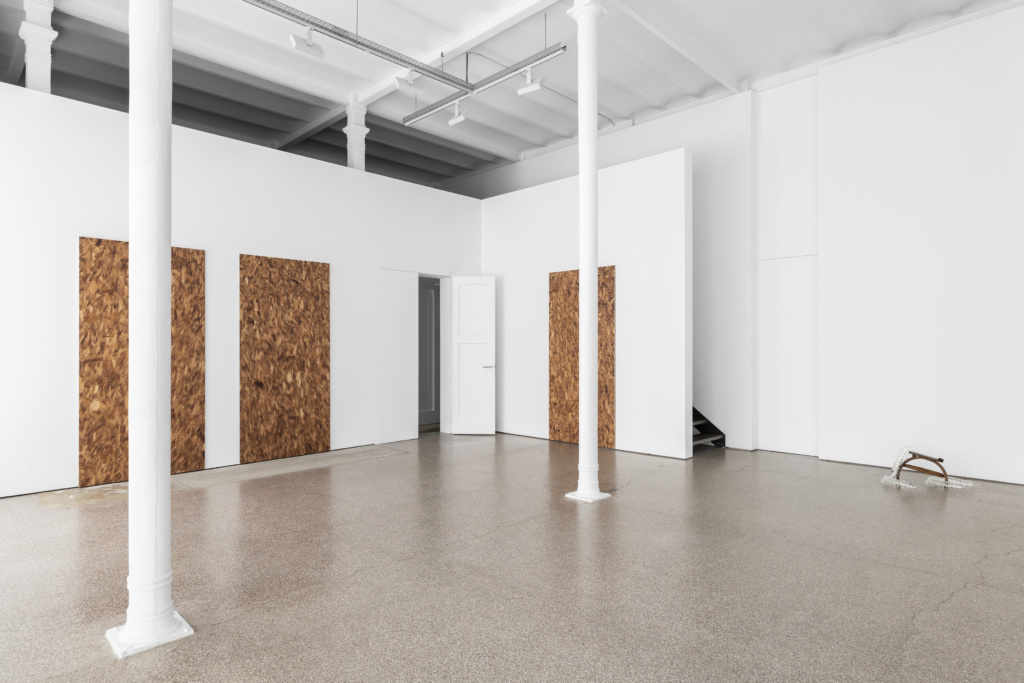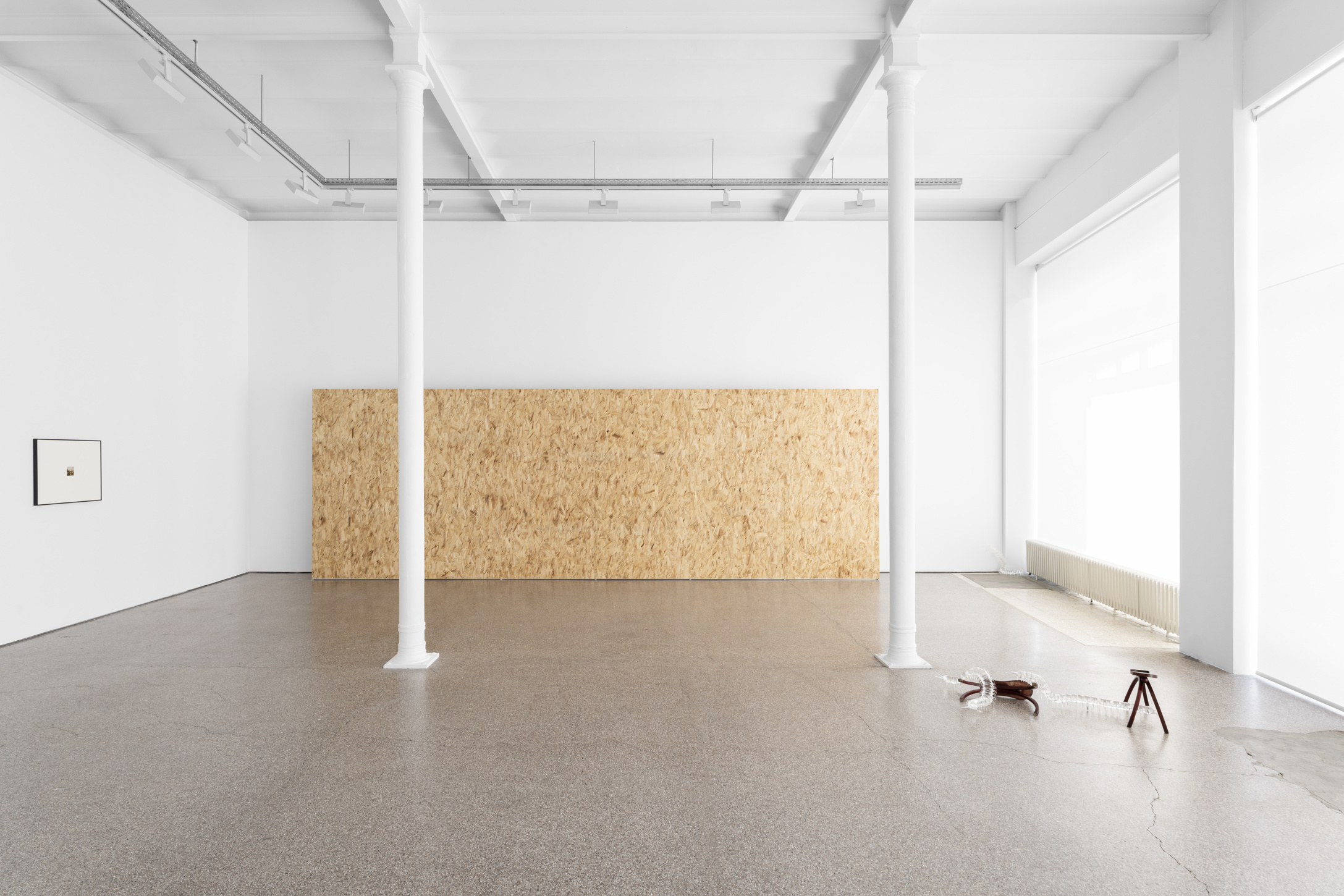For his first exhibition at Galerie Greta Meert, Jacob Kassay presents Never Before Seen Footage of Woodstock. In this exhibition, translucent, spine-length glass centipedes populate the ground floor of the gallery. These vessels are modelled after the arthropods whose descriptive name in part comes from the Latin word pedis “foot.” Characterised by their segmented bodies, these arthropods are also known for their compound eye—a photosensitive organ comprised of thousands of receptive lenses. These receptors turn on and off individually at various speeds, thereby producing a flicker frequency, which, though it yields a low image resolution, allows for acute perception of movement.
The idea of vision occurring through the flickering effect of the compound eye of these insects resonates with the origin of the term “footage,” which comes from film stock being measured in feet in order to express screen time (1 foot of 35mm film = 1 second). Traditionally, the physical motion of the film and the fixity of the screen are the parameters that enable our single-lens eyes to focus on the subject of a motion picture. A word that once had physical grounding is made fugitive with digital Frames Per Second.
In Kassay’s treated OSB (oriented strand board), the reality of the material and that of its representation cross contaminate, producing an image whose brush-sized surplus of flakes appear to animate like a wheat field in slow render. The infra-thin space between the fixed substrate and its overlaid depiction perform a schismatic duet; something watched but not necessarily seen. In the blink of an eye, the illusionistic space they conjure simultaneously implies and excludes movement. These objects at once function as screens and projectors, substrates and depictions, duration-less films that are visibly uncomfortable about their mutation into painting.
Commonly used on job sites since the 1960s, OSB panels are, so to speak, a manufactured image of wood; celluloid cum cellulose. These panels reconstitute the idea of wood by compressing fractured wood strips like pixels. In coupling then flattening these lo-fi components, Kassay welcomes the uncanny redundancy, bringing about an effect akin to a real-life digital glitch. When paintings awkwardly behave like screens and our eyes have nothing concrete to focus on, space and time cave in. From one painting to the next, we find ourselves tracked by their atonal surface, inhibiting our bond with discernible reality.
Jacob Kassay was born in 1984 in Lewiston, New York. He lives and works in New York. His first solo exhibition in New York took place at the gallery Eleven Rivington in February 2009. Recent solo exhibitions are: FOOTAGE, Hallwalls Contemporary Arts Center, Buffalo, USA (2019); X, von ammon co, Washington, USA (2019); Leeahn Gallery, Seoul, Korea (2018); Alarmer 2, team gallery, inc., Los Angeles, USA (2017); DFHJ, Reserve Ames, Los Angeles, USA (2017); OTNY, Albright-Knox Art Gallery, Buffalo, USA (2017); Fitzpatrick-Leland House, Los Angeles, USA (2015); HIJK, Xavier Hufkens, Brussels, Belgium (2015). Jacob Kassay also has been included in group exhibitions at Expo 1, MOMA/PS1, New York (2013); The Surface of the East Coast from Nice to New York, Le 109 – Les Abattoirs, Nice (2017); Other Mechanisms, Secession, Vienne, Austria (2018).




